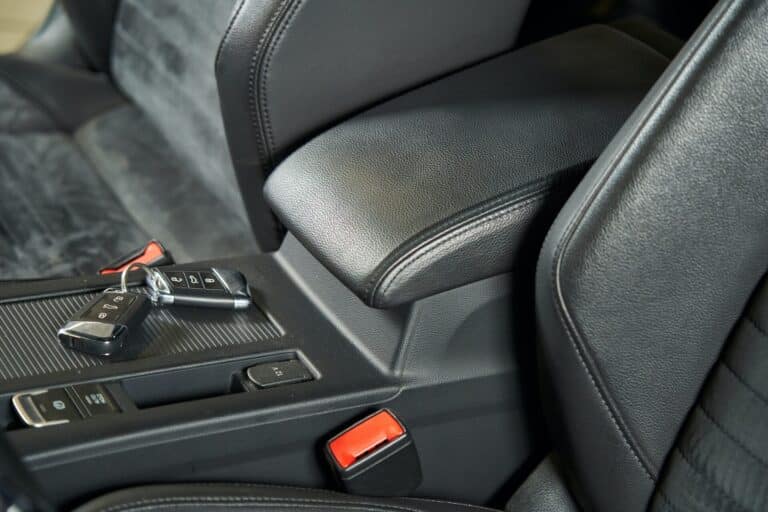Tail light Dodge Ram Wire Color Codes
Color codes can be very confusing; more confusing are color code diagrams.
Usually, vehicle color codes are subject to the car manufacturer and the country the vehicle brand belongs.
In addition, tail lights rely on wires with certain color codes to light correctly.
Knowing the right color codes and where they fit in can be very handy when repairing or changing your Rams’ tail lights.
Hence, let’s look at the tail light color codes for your Dodge Ram.
There are eight color codes within the Dodges’ tail light wiring circuit, but the three major color codes are red, white, and blue. For example, white is the ground, red is the brake and blue is the park. The remaining five color codes have main colors with tracer colors that run through them. They’re black, white/light-green, white/yellow, white/dark green, and dark green/white.
Functions of Each Color ode
Understanding the function of each color code in your truck is very important.
The lights of many vehicles would not function at all if the color codes are wired wrongly (Perhaps by the manufacturer).
Also, it is important to note that for a vehicle with an internal harness, the wires’ color codes may usually differ from one vehicle to the other.
Most cars use black, red, and white wires for the brakes; others may opt for black or brown tires for their tail lights.
Let’s take a look at each color code and its function below; we’ll be starting with the three main color codes:
- Red is the color code for brake lights. It lights up at the same time you step on the brake pedal.
- White is also called ground wire because it is negative (grounded). Some vehicles use more than one color code for their ground wires. Most vehicles can use black, white, and green together for their ground wire as part of their lighting system.
- The blue color code signifies the parking light. Parking lights help aid headlight visibility when it is in parking mode.
- The black color code is for ground as well. As mentioned earlier, most vehicles use white, black, or green together for ground wires within their lighting system.
- White/light Green color code is usually attached to the rear backup lights.
- The white/Yellow color code will be attached to the park lights.
- The White/Dark Green color code is for the turn signal. It should not be confused with the Dark Green/white wire.
- The Dark Green/White color code is to be attached to the brake. It should not be confused with the White/Dark Green wire.
Vehicles that use LED tail lights may have a wire connected to another wire, both coming from the taillight assembly.
Usually, the wire is black (ground wire), although it could also be green or white.
If you discover this is the case in your vehicle, you must have all three colors present when making repairs or replacing bulbs. One cannot substitute for the other.
The Color Code Chart
The color code chart is a useful guide for identifying color codes and their purposes in the car’s wiring system.
Below is a color code chart that identifies each color code and its use. It is important to note that color codes might not be the same for all vehicles.
For example, some car manufacturers may opt for different tracer colors or main colors, but the main function of the wires remains the same.
| Main color | Tracer color | Purpose |
|---|---|---|
| Black | None | Earth/Ground |
| Black | Red | Electric/Electronic speedometer to the sensor |
| Black | Green | Relay to radiator motor |
| Black | Purple | Temperature switch to the warning light. |
| Blue | None | Lighting switch to dip switch. |
| Blue | Black | Fuse to the right-hand main headlamp. |
| Blue | Pink | Fuse to left-hand dip headlamp. |
| Blue | Orange | Fuse to the right-hand headlamp. |
| Brown | None | Main Battery lead |
| Brown | Purple | Alternator regulator feed. |
| Brown | Black | Alternator battery sensing lead. |
| Brown | Slate | Starter relay contact to the starter solenoid. |
| Green | None | Accessories fused via the ignition switch |
| Green | Brown | Switch to reverse lamp |
| Green | Blue | Water temperature gauge to temperature unit. |
| Green | Pink | Fuse to the flasher unit |
| Orange | None | Wiper circuits fuse via the ignition switch. |
| Orange | Green | Switch to front screen wiper motor second speed. |
| Orange | White | Switch to headlamp or rear window wiper motor feed, timer, or relay coil. |
Difference Between Taillights and Brake Lights
Brake lights and tail lights may be located within the same region–the car’s rear end.
However, technically, they are not the same. Some major differences between taillights and brake lights are:
- Taillights turn on immediately the vehicle’s headlights turn on as well. Meanwhile, brake lights only light up when the brake pedal is stepped on. So although both rear lights are red, brake lights emit a more luminous red light.
- Brake lights and taillights share the same bulb on many vehicles. However, the bulb houses a separate filament for the taillight and another for the brake lights. Some vehicles also make use of separate bulbs for each circuit.
To know if your brake lights and taillights share the same bulb, you can have a car assistant check on it by pressing the brake pedal and noting which bulb illuminates inside the taillight assembly.
How to Fix Your Vehicle’s Taillight?
The taillights on your vehicle may be faulty or aren’t illuminating properly. The issues may be from the fuse or the bulb itself.
Whichever way, fixing your taillights is a very straightforward process that can be done on your own without the cost or assistance of a car mechanic.
So let’s look at steps you can follow to fix your taillights.
#1. Check the Fuse
Usually, blown fuses are the main cause of bulbs, not lighting.
Your car manual should have a labeled diagram of the vehicle’s fuse box; go through it and locate the taillight fuse.
Check that the fuse is still intact. If the metal inside the piece of metal inside the fuse looks fractured, then the fuse is blown and would need replacing.
Most fuse cars have a fuse extractor in the fuse box. It is a small plastic tool that looks like a pair of pliers.
Use tweezers or your fingers to remove the broken fuse, buy a replacement and insert it.
#2. Check the Tail Lamp Wiring
Tail lamp wires are the wires connecting the tail lights. You must remove the trunk’s panels to access the wiring harness in most cars.
If not, they’re usually located inside the trunk’s lid. After opening up, if you notice mismatches in the wiring circuit, rearrange properly according to the correct color codes and fix back.
Likewise, if you notice a loose wire, insert it back into the assembly. Why Is Dodge Challenger ABS And Traction Control Light On?
Conclusion
In conclusion, the taillights for Dodge Ram have a total of 8 color codes.
Three of these are the main wiring color codes: red for brake lights, white for ground, and blue for the park.
Most vehicles use more than one color code for their ground wires. These colors are usually: Black, Green, or white.






